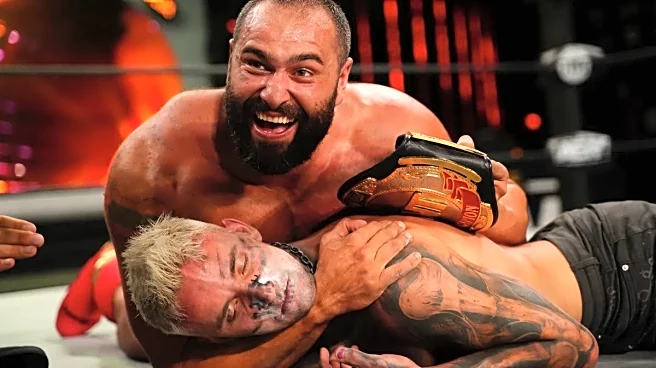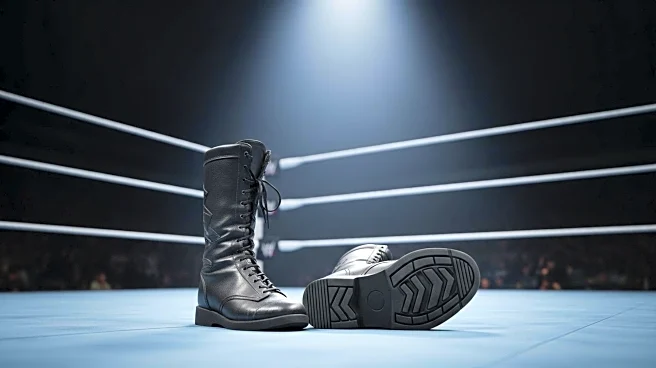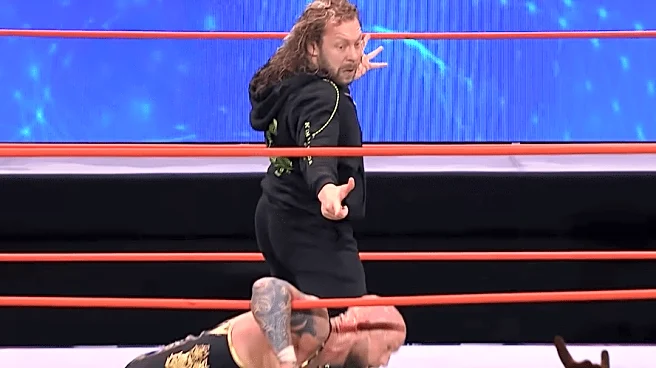What's Happening?
Kota Ibushi, a renowned AEW and NJPW wrestler, has suffered a broken femur during a match against Josh Alexander at AEW Collision. The injury required immediate hospitalization and has led to a lengthy
recovery timeline. Ibushi has shared updates on his condition, indicating that he expects to fully recover in one year and return to wrestling in two years. Despite the setback, Ibushi remains optimistic about his recovery, citing his belief in his ability to heal quickly. His career, marked by numerous championships and accolades, has been impacted by injuries since joining AEW in 2023.
Why It's Important?
Ibushi's injury is a significant development in the wrestling world, affecting AEW's roster and future matchups. As a high-profile wrestler, his absence could impact AEW's programming and fan engagement, necessitating adjustments to planned events and storylines. The situation also highlights the physical risks associated with professional wrestling, emphasizing the need for effective injury management and support systems for athletes. Ibushi's recovery journey will be closely watched by fans and industry stakeholders, as his return could influence AEW's competitive landscape.
What's Next?
Ibushi's recovery process will involve extensive rehabilitation, with a focus on regaining strength and mobility. AEW may explore ways to keep him involved in non-physical roles, such as commentary or promotional activities, to maintain his presence in the wrestling community. As he progresses, AEW will likely plan for his eventual return, potentially setting up high-stakes matches to capitalize on his comeback. The company will also need to manage fan expectations and provide updates on his condition to ensure transparency.
Beyond the Headlines
Ibushi's situation underscores the importance of athlete welfare in professional wrestling, where injuries can have long-term consequences. It also highlights the resilience required to overcome physical setbacks and the role of mental fortitude in recovery. As wrestling organizations continue to evolve, they must prioritize the health and safety of their performers, implementing measures to prevent injuries and support recovery.












